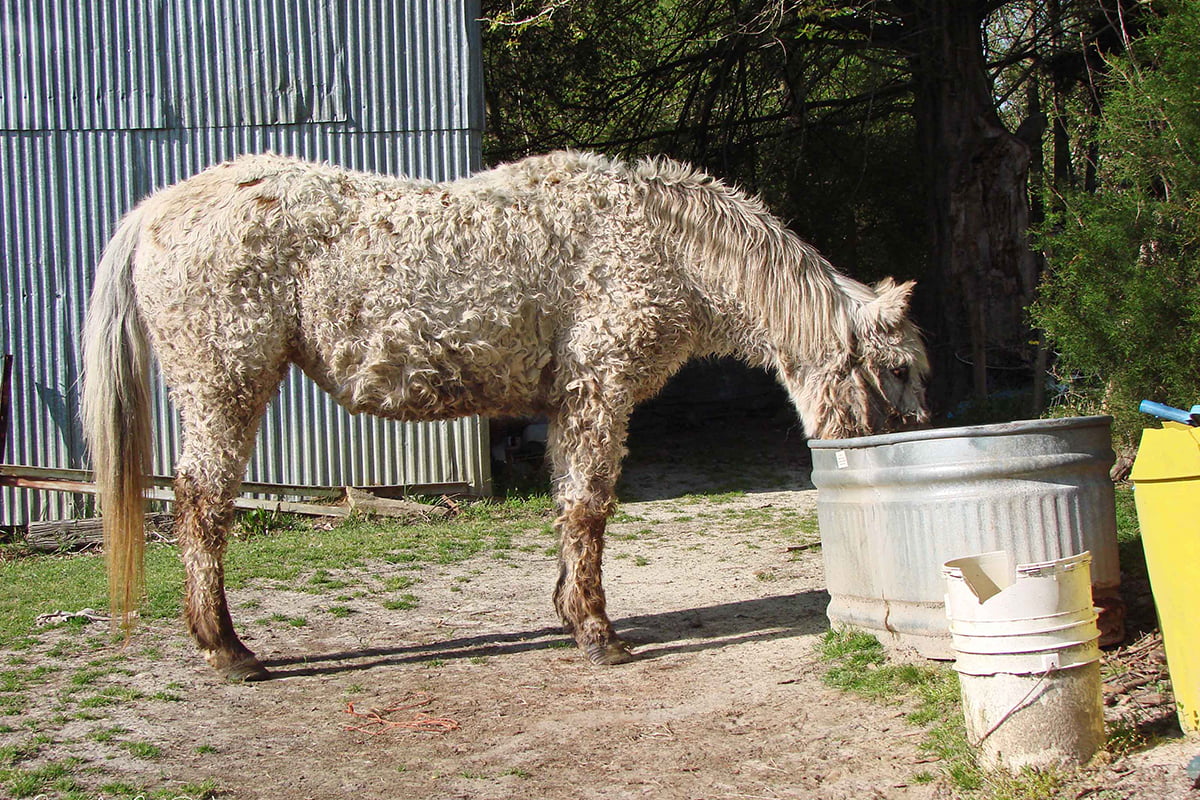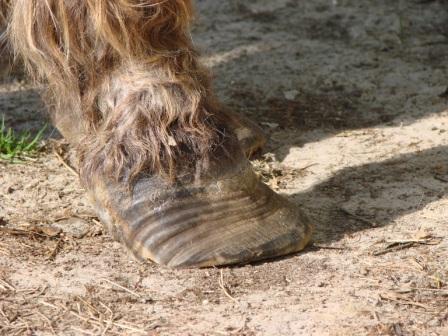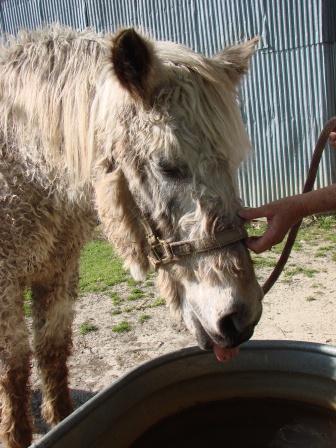I know how annoying it is, you are watching TV and here comes another commercial talking about some disease that people get and they always have initials to label it, you know, ED, RLS, MS, and on and on. Then they talk about a new magic medication that is available to treat this disease.
Well, I am about to do the same thing. One of the things that we have noticed is that the age of our equine patients is getting higher and higher. Fewer mares are being bred; people are keeping their already trained horse and taking better care of them. As a result we are seeing higher numbers of senior horses with senior problems. Some things you expect like missing teeth and arthritic legs. But we also see a much higher incidence of Pituitary Pars Intermedia Dysfunction or PPID.

Right now you’re saying WHOA Dr. Cook! Pituitary what?
OK so let’s back up. Everybody has a pituitary gland, you, me and our horses all have one. The pituitary gland sits under the brain. It produces chemicals that act as signals on many parts of the body to regulate body function. The pituitary gland is divided into sections based upon function, they are called the adenohypophysis and neurohypophysis, it’s kind of like North America and South America. The neurohypophysis is further divided into the pars tuberalis, pars intermedia and pars distalis, think of it being like Macon, Warner Robins and Perry, we are all in middle Georgia but we have our own identity. In cases of PPID it is the pars intermedia that gets into trouble, that is where the name Pituitary Pars Intermedia Dysfunction or PPID comes from.
If you could look into the brain of a horse with PPID you would see that the pituitary gland has become enlarged. The cells of the pars intermedia have multiplied and are now producing chemicals at an accelerated rate, it’s like a conveyor belt dumping off product faster than the workers can put it boxes. All those chemicals are telling the body to do more, more, more! The adrenal gland is being told “more cortisol”! Higher levels of cortisol mean the horse’s blood glucose goes up and up, much like a person with diabetes. The high levels of cortisol and glucose wreak havoc in the horse’s body.
The classic sign of PPID is hirsutism, a fancy name for a long and curly hair coat that fails to shed. Early in the disease process long hair growth may be restricted to the lower jaw, base of the neck and the back of the lower legs. Over time the hirsutism covers a larger area and shedding occurs later each year, in the later stages of the disease the horse will not shed and must be body clipped each year.
Weight loss and poor performance are also commonly seen. Increased levels of cortisol lead to protein catabolism with a loss of muscle mass over the back and rump. Patchy fat deposition is also seen along the crest of the neck, over the tail head and in the sheath of male horses. Fat may also be deposited over the eyes in the supraorbital fossae, this area is commonly referred to as the “salt pits” in older horses.

Most commonly horses with PPID present for laminitis (founder) that has crept on slowly with no obvious cause for lameness. The high levels of cortisol result in high levels of glucose which in tern causes elevated levels of insulin which leads to laminitis.
Polydipsia (frequent drinking) and polyuria (frequent urination may also be seen as a result of the elevated blood glucose much like a human diabetic. Some owners may notice that the stall is too wet or they are using more shavings than previously.
The high levels of cortisol suppress the immune system and delay wound healing. Skin infections, scratches, hoof abscesses, sinusitis, teeth infections and non or slow healing eye lesions are common.
In mares they may have trouble conceiving. Some mares that are not pregnant or nursing may develop persistent lactation (milk production) so called “witches milk”.
So who gets PPID?
Generally it is older horses age 15 & higher but we have seen cases in horses as young as age 7! Horses of any breed, any sex and any use can develop this problem.
Some horses show only subtle signs, they just aren’t “what they used to be”. So we can test for PPID. A simple test called a Dexamethasone Suppression Test is the gold standard for a diagnosis; the test involves two blood samples and is of reasonable cost. The test cannot be done during the fall months of the year (August through November) due to the normal pituitary cycle. This time of year is an excellent time to evaluate senior horses that may be showing subtle signs.

There is treatment for PPID. The drug Pergolide can slow the flow of chemical signals coming from the pituitary gland. For many years we have used compounded forms of Pergolide. The compounded forms were mixed by pharmacies in varies forms of pastes, liquids, chewables and powders. The problem is that the compounded forms were not stable in that the chemical was slowly degrading especially if stored in warm barns or warm temperatures common in Georgia. We now have a new product called Prascend. The tiny tablet contains 1 mg of Pergolide and has been shown to be stable for prolonged periods of time. 1 Prascend tablet per day will treat most horses with PPID.
If you are like me it really helps to have a picture to understand disease processes. There is a great video on PPID at www.prascend.com. I hope you will take the time to watch the video so that you’ll know more about this important disease.
